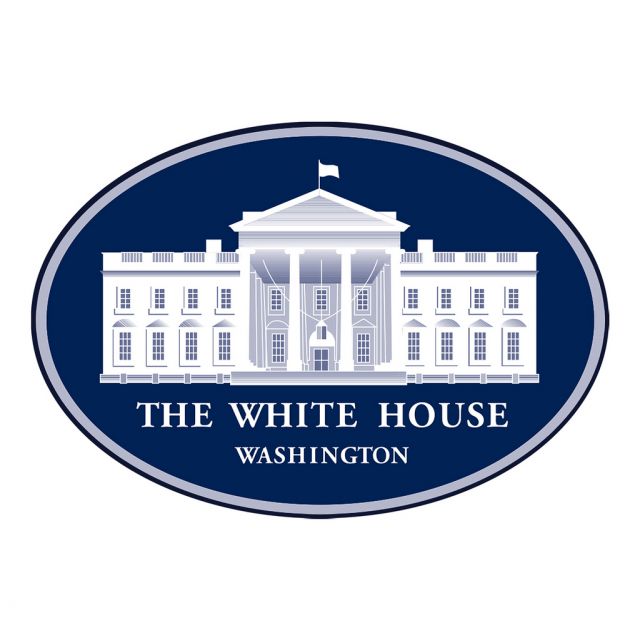New Initiatives Remove Barriers to Local Clean Energy, Reduce Greenhouse Gas Emissions
Since taking office, President Biden has prioritized expanding clean energy technologies as part of his historic efforts to tackle the climate crisis - all while helping American families lower their energy costs and creating good-paying, union jobs. Distributed Energy Resources (DERs) - like rooftop solar, battery storage, heat pumps, and electric vehicles - will cut consumer costs, improve public health, strengthen U.S. energy security, and help meet the President's goal to reduce emission 50-52% below 2005 levels in 2030. Recent analysis shows that the average American family can save an additional $500 a year from using clean electricity like solar and heat pumps to power their homes. The President's National Climate Task Force formed a Distributed Energy Resources Working Group to advance these clean energy technologies and ensure these cost-saving opportunities are available to all Americans.
Today, as part of the President's commitment to tackling the climate crisis, the Biden-Harris Administration is announcing new partnerships and initiatives designed to increase access to these cost-saving local clean energy resources. These announcements leverage existing programs, funding, and guidance, including the Bipartisan Infrastructure Law, to unlock resources and pave the way for good-paying jobs in the growing clean energy economy in communities across the country. Additionally, they build on those investments proposed in the President's FY 2023 Budget. These announcements will also further the President's Justice40 Initiative which commits to delivering at least 40 percent of the benefits from federal climate and clean energy investments to disadvantaged communities that are marginalized, underserved, or overburdened by pollution.
STREAMLING CLEAN ENERGY RESOURCES FOR AMERICANS
- Leveraging Community Financial Institutions to Lower Costs and Expand Clean Energy: Existing programs at the Department of Energy (DOE), Treasury and U.S. Department of Agriculture (USDA) are collectively poised to support the investment of billions of dollars in state and local DER projects. These investments can be leveraged by institutions like community development financial institutions, credit unions, green banks, regional and community banks and state revolving funds to drive climate resilience and clean energy projects in underserved communities across the country. To accelerate these cost saving projects DOE, Treasury, and USDA will convene a community of practice to help community financial institutions understand how existing federal funding and technical assistance for clean energy investments can be leveraged for DER projects. To complement the work of the community of practice, the Distributed Energy Resources Working Group formed under the President's National Climate Taskforce will compile a toolkit of DER financing resources, convene a community financial institutions summit focused on leveraging private and philanthropic capital for DER projects, and expand the work of the National Community Solar Partnership's Credit Ready Solar initiative to include all DERs.
- Charting Strategic Deployment of DERs: DOE and Lawrence Berkeley National Lab (LBNL), as part of the National Community Solar Partnership , are enhancing their REPAIR modeling tool to better understand how to maximize the benefits and cost savings of community solar and other DER projects to the local grid. DOE will use this tool and stakeholder engagement efforts to develop case studies and model technical, policy, and economic scenarios to inform stakeholders, like utilities, public service commissions, and DER developers on how to maximize the benefits of DER for communities.
- Enabling More Efficient Systems and Grid Infrastructure: DOE is announcing the establishment of new Bipartisan Infrastructure Law funded programs that will provide rebates for replacing old transformers and electric motor systems with newer ones that will be resilient to the impacts of extreme weather and increase energy efficiency. Replacing aging electric motor systems helps companies make pumps, fans, and compressors more efficient, providing significant energy and cost savings opportunities. Likewise, switching-out distribution transformers, which are some of the most vulnerable parts of America's power grid, increases resilience and energy efficiency.
DELIVERING CLEAN ENERGY TO UNDERSERVED COMMUNITIES
- Developing a Community Solar Customer Platform: The Department of Energy (DOE) and the Department of Health and Human Services (HHS) will partner to develop and pilot a digital platform that will manage the enrollment, use, and monitoring of community solar subscriptions for customers in the Low-Income Home Energy Assistance Program (LIHEAP). The platform will connect customers who are LIHEAP-eligible with community solar subscriptions, to further reduce customer energy costs and remove barriers for application, while increasing the deployment of community solar projects and reducing the cost of customer acquisition. DOE's National Community Solar Partnership will lead coordination with HHS, utilities, state and local governments, and industry to develop the platform, with the goal of piloting the subscription program in 3-5 states.
- Ensuring Residents of HUD-Assisted Multifamily Housing Benefit from Solar Energy: Washington, D.C.'s "Solar for All" initiative aims to bring the benefits of solar energy to 100,000 families with low to moderate incomes in the District of Columbia. The U.S. Department of Housing and Urban Development (HUD) has determined that D.C. Solar for All's community-net-metering (CNM) credits will be excluded from household income and utility allowance calculations and therefore will not increase housing costs for residents in properties participating in HUD Multifamily rental assistance programs. HUD is also updating guidance to allow residents of affordable housing to better access cost-saving community solar subscriptions and reviewing guidance to allow Public Housing Authorities to more easily enter into power purchase agreements for low-cost clean energy.
BUILDING THE CLEAN ENERGY WORKFORCE OF THE FUTURE
- Creating Youth Climate Jobs: The Department of Labor's (DOL) Youthbuild program will award 68 organizations more than $90 million to support the development of Registered Apprenticeship and other career pathway models that prepare underserved young adults (16-24 years) who are not currently in school for jobs in construction and other in-demand industries, including green building. This model will provide valuable training enabling the acquisition of occupational skills while promoting educational opportunities with youth – splitting time between workplace training and the classroom to obtain their high school diploma or equivalency degree.




